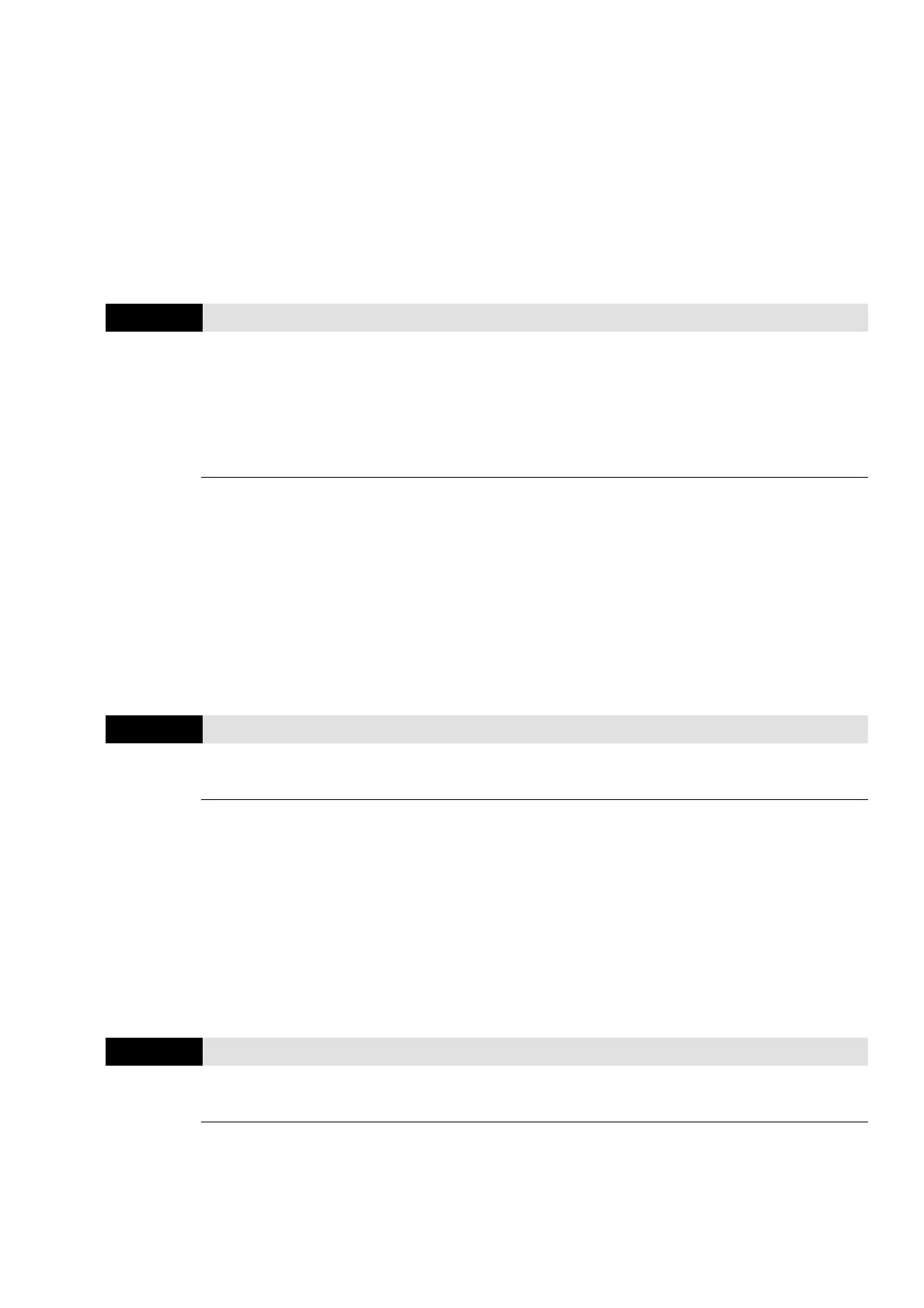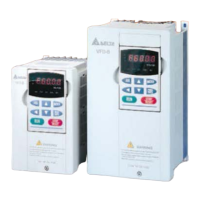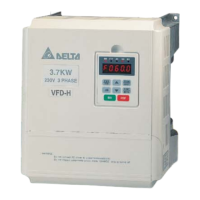Chapter 12 Descriptions of Parameter SettingsC2000 Plus
12.1-07-1
07 Special Parameters
The following are abbreviations for different types of motors:
IM: Induction motor
PM: Permanent magnet synchronous AC motor
IPM: Interior permanent magnet synchronous AC motor
SPM: Surface permanent magnet synchronous AC motor
SynRM: Synchronous reluctance motor
You can set this parameter during operation.
07-00
Software Brake Chopper Action Level
Default:
Settings 230V models: 350.0–450.0 V
DC
370.0
460V models: 700.0–900.0 V
DC
740.0
575V models: 850.0–1116.0 V
DC
895.0
690V models: 939.0–1318.0 V
DC
1057.0
Set the DC bus voltage at which the brake chopper is activated. Choose a suitable brake resistor
to achieve the best deceleration. Refer to Chapter 7 Optional Accessories for information about
brake resistors.
This parameter is only valid for the models as metioned.
1. 230V models: 22 kW and below
2. 460V models. 30 kW and below
3. 575V models: all
4. 690V models: 37 kW and below
07-01
DC Brake Current Level
Default: 0
Settings 0–100%
100% corresponds to the rated current of the drive (Pr.00-01 x 1.414).
Set the level of the DC brake current output to the motor at start-up and stop. It is recommended
that you start with a low DC brake current level and then increase until you reach the proper
holding torque. However, the DC brake current cannot exceed the motor’s rated current to prevent
the motor from burnout. DO NOT use the DC brake for mechanical retention, otherwise injury or
accident may occur.
The PM has the magnetic field itself, using the DC brake may possibly cause the motor run in a
reverse direction, therefore, it is not recommended to use DC brake for PM.
07-02
DC Brake Time at Start-Up
Default: 0.0
Settings 0.0–60.0 sec.
The motor may continue rotating after the drive stops output due to external forces or the inertia
of the motor itself. If you use the drive with the motor rotating, it may cause motor damage or
trigger drive protection due to over-current. This parameter outputs DC current, generating torque
to force the motor stop to get a stable start before motor operation. This parameter determines

